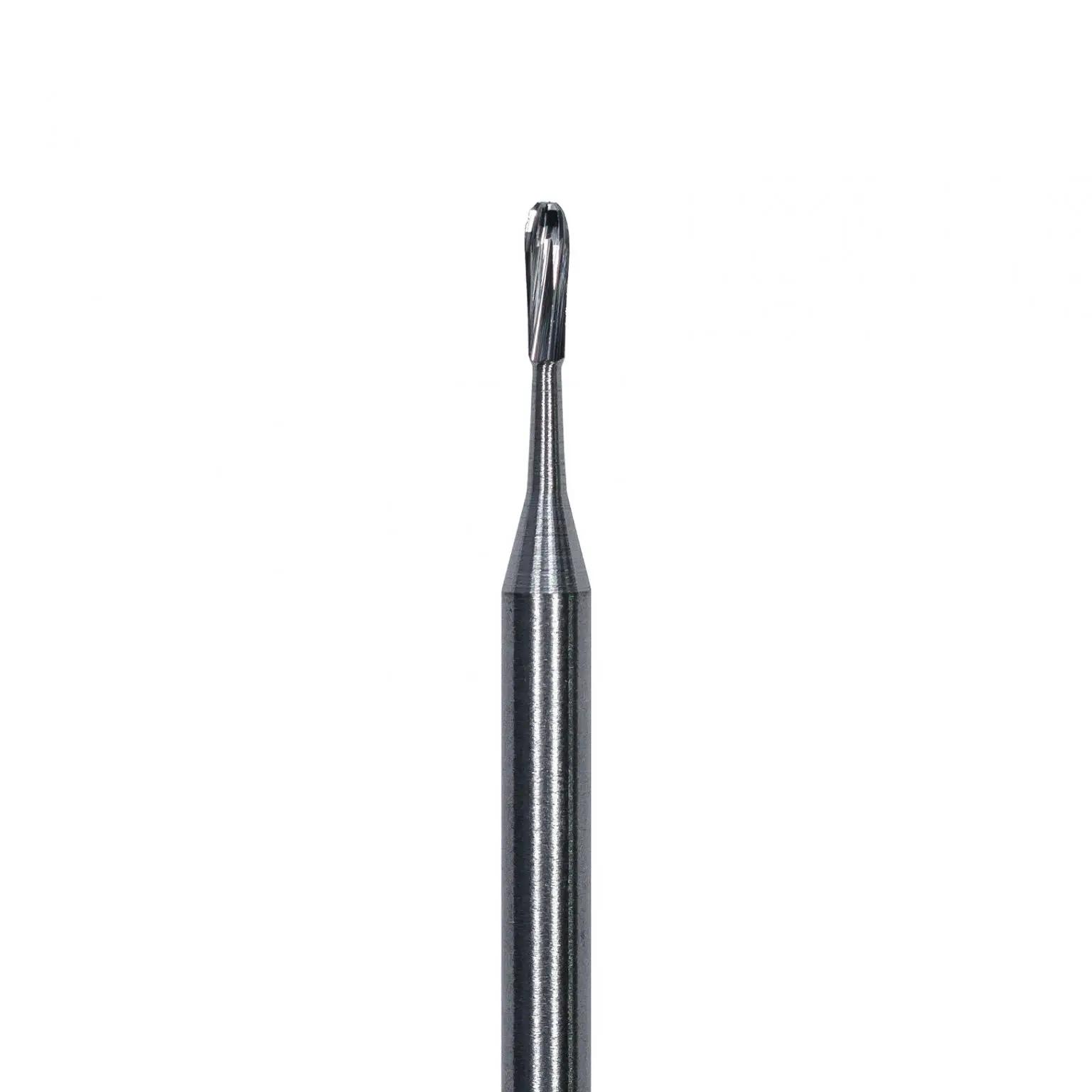Introduction to Bur Surgery in Dentistry
The evolution of dental practices has significantly been influenced by various technological advancements, with bur surgery taking a center stage in restorative dentistry. Historically, the use of dental burs can be traced back to ancient times when rudimentary tools were employed in dental procedures. Today, bur surgery has become an indispensable component in achieving precision and excellence in restorative dental practices. In modern dentistry, the importance of bur surgery cannot be overstated; it provides the dentist with the means to remove decayed or damaged tooth structures, create cavity preparations, and shape tooth surfaces to ensure proper retention and adaptation of restorative materials.
Types of Dental Burs and Their Functions
● High-Speed vs. Low-Speed Burs
Dental burs are categorized into high-speed and low-speed types, each serving distinct functions. High-speed burs are primarily used for cutting through enamel and dentin efficiently. Their rapid rotational speed allows dentists to perform procedures quickly and with greater precision. On the other hand, low-speed burs are utilized for tasks that require more control and less heat generation, such as polishing and finishing restorations.
● Materials Used in Manufacturing Burs
The performance of a dental bur significantly depends on the material from which it is made. Common materials include tungsten carbide, stainless steel, and diamond. Each material offers unique benefits; for instance, diamond burs are renowned for their hardness and durability, making them ideal for cutting hard tissues, while carbide burs are favored for their sharpness and ability to produce smooth cuts.
● Specific Bur Shapes and Their Purposes
Dental burs come in various shapes, each designed for specific applications. For example, round burs are ideal for initiating a cut and removing decay, whereas inverted cone burs are used for creating undercuts in cavity preparation. The choice of bur shape plays a critical role in the success of restorative procedures, allowing dentists to tailor their approach based on the clinical scenario.
Preparation for Cavity Restorations
● Steps in Cavity Preparation Using Burs
Preparing a tooth for a restoration involves several crucial steps, with bur surgery playing a pivotal role. The first step is to remove any decayed or damaged tooth structure using appropriate burs. Once the decay is removed, the cavity is shaped to support the restorative material, ensuring that it will adhere properly and withstand the forces of mastication.
● Importance of Precision in Shaping Tooth Surfaces
Precision in shaping tooth surfaces during cavity preparation is paramount. It not only ensures the proper fitting of the restorative material but also maintains the tooth's structural integrity. Using the best bur surgery techniques allows for meticulous contouring, ultimately enhancing the longevity and success of the restoration.
● Techniques to Ensure Optimal Retention of Materials
Achieving optimal retention of restorative materials is a key goal in cavity preparation. This is accomplished by creating a retentive form within the cavity, often involving undercutting to lock the restoration in place. Advanced bur surgery methods, executed with the utmost precision, are crucial in achieving this retentive quality.
Removing Decayed or Damaged Tooth Structures
● Identifying Decayed Tooth Areas
A critical aspect of restorative dentistry is the accurate identification and removal of decayed or damaged tooth structures. Advanced diagnostic tools assist in pinpointing areas of decay, ensuring that only compromised tissues are removed.
● Techniques for Efficient Removal of Decay
Bur surgery techniques are instrumental in the efficient removal of decay. Utilizing high-speed burs, dentists can rapidly excise damaged tissue, minimizing the risk of leaving residual decay that can lead to further complications.
● Maintaining Healthy Tooth Structures
While removing decay is essential, preserving healthy tooth structure is equally important. Precision in bur surgery ensures that only diseased tissue is removed, maintaining as much of the natural tooth as possible and supporting the overall health and function of the dentition.
Role in Shaping Tooth Surfaces
● Ensuring Proper Adaptation of Restorative Materials
The success of a restoration greatly depends on the adaptability of the restorative material to the prepared tooth surface. Bur surgery is critical in achieving the ideal surface contour and texture, facilitating a seamless bond between the tooth and the restorative material.
● Sculpting and Contouring for Aesthetic Outcomes
Beyond functional restoration, the aesthetic outcome is a major consideration. Through skillful use of burs, dentists sculpt and contour restorations to mimic the natural anatomy of the tooth, ensuring a visually appealing result that harmonizes with the patient's dentition.
● Challenges in Achieving Natural Tooth Shape
Replicating the complex anatomy of natural teeth presents challenges in restorative dentistry. However, advancements in bur surgery, including the use of innovative burs and techniques, have significantly enhanced the ability of dentists to achieve natural-looking restorations.
Enhancing Retention of Restorative Materials
● Factors Influencing Retention Success
Several factors influence the retention success of restorative materials, including the design of the cavity preparation and the choice of bonding agent. Bur surgery provides the precision necessary to optimize these factors, enhancing the durability of the restoration.
● Techniques for Maximizing Material Adherence
Maximizing the adherence of restorative materials involves creating a microscopically rough surface that facilitates bonding. Advanced bur surgery techniques are employed to achieve the desired surface characteristics, ensuring a strong and durable bond.
● Role of Surface Roughness and Texture
Surface roughness and texture play a crucial role in the retention of restorative materials. The use of specific bur shapes and techniques can create the ideal surface profile, promoting the mechanical interlocking of the restorative material with the tooth.
Innovations in Bur Design and Technology
● Advances in Bur Materials (e.g., Diamond-Coated)
Recent innovations in bur design have focused on enhancing performance and longevity. Diamond-coated burs, for instance, offer unparalleled hardness and durability, making them suitable for demanding procedures and extending their functional lifespan.
● Ergonomic and Efficient Design Changes
Ergonomics and efficiency are key considerations in the design of dental burs. Manufacturers are continually refining bur designs to reduce hand fatigue, improve precision, and increase the efficiency of dental procedures, benefiting both dentists and patients.
● Impact of Technology on Bur Performance
Technological advancements have revolutionized bur performance, enabling greater precision and efficiency in restorative dentistry. Innovations such as computer-aided design and manufacturing (CAD/CAM) burs have expanded the possibilities in dental restorations, ensuring consistent and high-quality outcomes.
Safety and Precision in Bur Surgery
● Minimizing Trauma to Surrounding Tissues
A primary concern in bur surgery is minimizing trauma to surrounding tissues. High-speed burs, coupled with precise techniques, enable dentists to target specific areas while preserving adjacent healthy structures, reducing postoperative complications and promoting faster healing.
● Techniques to Ensure Patient Comfort
Ensuring patient comfort during dental procedures is of utmost importance. The use of advanced bur surgery techniques, including the selection of appropriate burs and application of local anesthesia, helps to minimize discomfort and enhance the overall patient experience.
● Training and Skills Required for Precise Work
Executing bur surgery with precision requires extensive training and skill. Dental professionals must be adept in selecting the correct burs and employing proper techniques to achieve optimal results, underscoring the importance of continuous education and practice in restorative dentistry.
Comparing Bur Surgery to Alternative Techniques
● Advantages Over Laser and Chemical Methods
While alternative techniques such as lasers and chemical agents are available, bur surgery remains a preferred method for many restorative procedures. It offers superior control, precision, and adaptability, making it suitable for a wide range of clinical scenarios.
● Limitations and Drawbacks of Bur Surgery
Despite its advantages, bur surgery has certain limitations, such as the potential for generating heat and causing discomfort. Understanding these limitations allows dentists to mitigate adverse effects and employ complementary techniques when necessary.
● Situations Where Alternative Methods Are Preferred
In some cases, alternative methods may be preferred over bur surgery. For instance, laser technology can be advantageous in soft tissue procedures, offering minimally invasive options with reduced bleeding and faster recovery times.
Future Trends and Developments in Bur Surgery
● Emerging Technologies and Materials in Burs
The future of bur surgery is promising, with ongoing research into new materials and technologies. Innovations such as nanomaterials and self-lubricating coatings hold potential for further enhancing bur performance and patient outcomes.
● Potential Impact on Restorative Dentistry Practices
These advancements are expected to have a profound impact on restorative dentistry, improving the efficiency and effectiveness of dental procedures and enabling more complex and aesthetically pleasing restorations.
● Predictions for the Future of Dental Bur Innovations
Looking ahead, dental bur innovations are likely to continue evolving, with a focus on increasing precision, reducing procedure times, and enhancing patient comfort. As these developments unfold, they will contribute to the ongoing advancement of restorative dentistry.
Conclusion
Bur surgery is an essential component of restorative dentistry, offering precision, control, and versatility in a wide range of procedures. From cavity preparation to shaping tooth surfaces, bur surgery plays a crucial role in achieving successful restorative outcomes. As the dental industry continues to innovate, the future of bur surgery holds exciting possibilities for enhancing patient care and advancing the field of restorative dentistry.
● Introducing Boyue
Jiaxing Boyue Medical Equipment Co., Ltd. is a leading manufacturer specializing in the production of medical rotary cutting tools. With expertise in 5-axis CNC precision grinding technology, Boyue produces a full range of dental burs and files for surgery and industrial applications. Committed to precision and reliability, Boyue's advanced technology and innovation have elevated the standard of dental instruments worldwide. Boyue continues to lead the industry by proposing groundbreaking solutions, ensuring that their products benefit oral patients globally.

Post time: 2025-05-15 18:26:04


